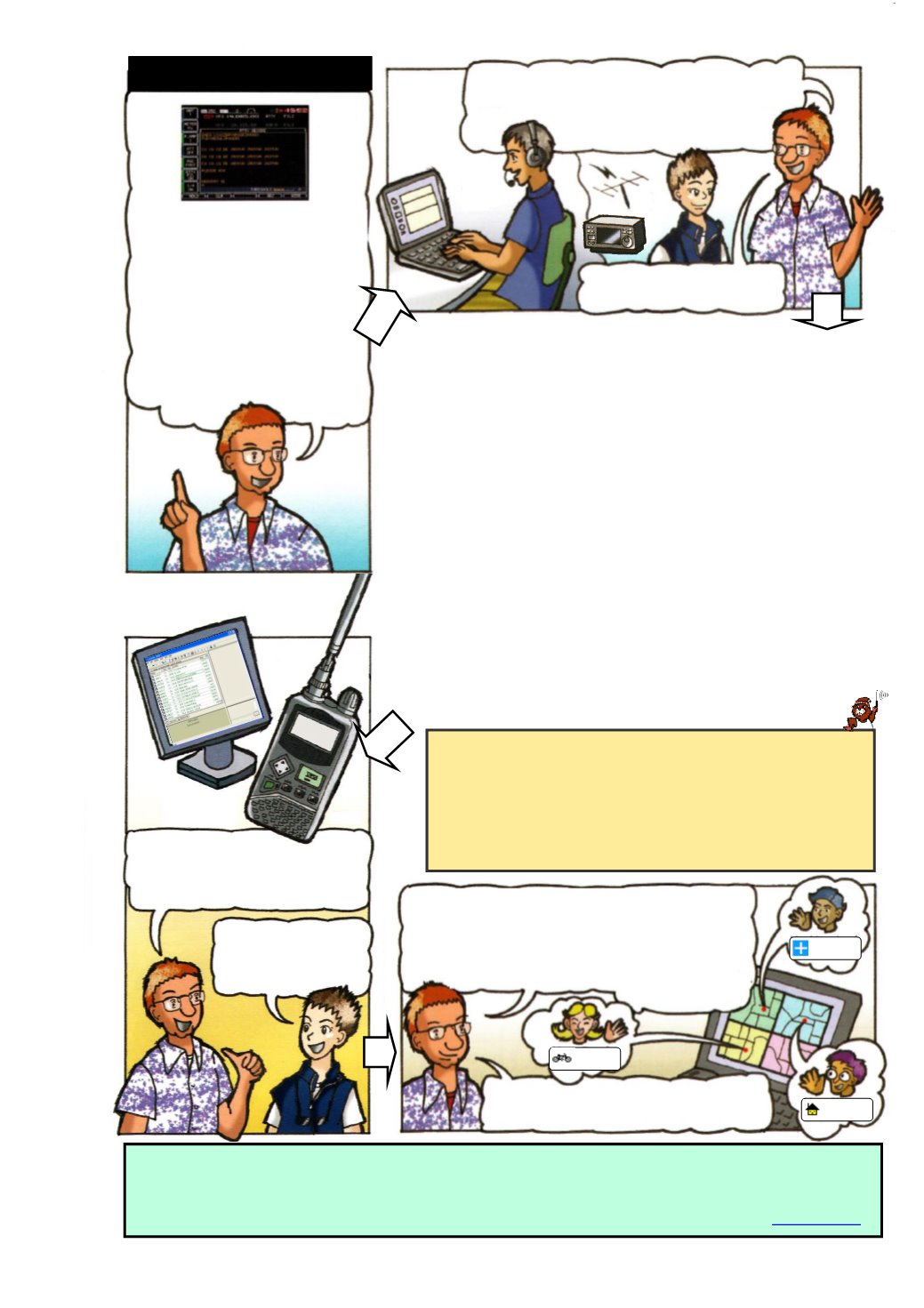
19
QUIZ ANSWERS:
If you connect a computer to
your rig there are programs
like Fldigi that can generate
and read Morse, as well as
more recent data formats like
PSK31 that will work even
with very weak signals.
Another data mode that has
been around a very long
time and is still heard on the
bands is RTTY.
You don’t even have to have your own
rig
. Once you have a licence you can
use Amateur Radio VOIP
like
EchoLink
.
That’s right .…there’s even an echolink app
to use smartphones like walkie-talkies to
transmit worldwide via echolink. Another
interesting system is APRS. It uses GPS
technology to transmit your location, speed,
and direction.
So you can talk to
other countries on
your hand held!
EchoLink
is also connected to
some UK repeaters so you can
use EchoLink through them.
You can buy rigs with APRS built in or use a
Terminal Node Controller (TNC) between your PC and
an inexpensive transceiver. The TNC converts the output from your PC into small data "packets" and
sends them as audio to your transceiver. On receive, the reverse happens.
APRS
stands for
Automatic Packet Reporting System - it’s not just automatic position reporting.
(See
www.aprs.fi )VOIP stands for Voice
over Internet Protocol.
This information can then be displayed
on Google Earth including Street View.
EchoLink
is a well established system and is free to join.
You email them a copy of your licence, download the free
software and in no time at all you can be talking to Radio
Amateurs all over the world. This is like Skype but there are
transmitters connected to echolink so you can be sat at your
computer talking through a transmitter to someone on their
home
radio, mobile, or portable, on
the other side of the world.
More recent systems are available that combine Amateur
Radio and the internet.
D-STAR
(Digital Smart Technology
for Amateur Radio) is an exciting new form of Amateur Radio
that compliments other parts of the hobby. It utilises digital
communication and the Internet, with optional GPS. As well
as direct radio to radio contacts, it allows communications
worldwide through special D-STAR repeaters.
Amateur Television
has been around for a long time and is
easier than ever now using free computer programs to
generate, decode, and display the signals. The simplest is
Slow Scan TV
which sends still TV pictures a bit like a fax
machine.
Using Computers
EXPERIMENTING
Designing a computer interface or complete radio, building from
kits, experimenting with Raspberry Pi, are very satisfying and
rewarding aspects of the hobby. You can also keep costs down.
Software Defined Radio allows cutting edge development and
experimental work without all the problems of continually
modifying and re-building hardware.
M6SIP Amy
M0NBJ Neil
G8WHR Alec








